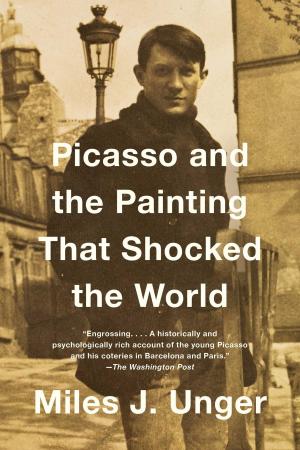| Author: | John Charles Van Dyke | ISBN: | 9786050406580 |
| Publisher: | John Charles Van Dyke | Publication: | August 19, 2015 |
| Imprint: | Language: | English |
| Author: | John Charles Van Dyke |
| ISBN: | 9786050406580 |
| Publisher: | John Charles Van Dyke |
| Publication: | August 19, 2015 |
| Imprint: | |
| Language: | English |
The origin of painting is unknown. The first important records of this art are met with in Egypt; but before the Egyptian civilization the men of the early ages probably used color in ornamentation and decoration, and they certainly scratched the outlines of men and animals upon bone and slate. Traces of this rude primitive work still remain to us on the pottery, weapons, and stone implements of the cave-dwellers. But while indicating the awakening of intelligence in early man, they can be reckoned with as art only in a slight archæological way. They show inclination rather than accomplishment—a wish to ornament or to represent, with only a crude knowledge of how to go about it.
The first aim of this primitive painting was undoubtedly decoration—the using of colored forms for color and form only, as shown in the pottery designs or cross-hatchings on stone knives or spear-heads. The second, and perhaps later aim, was by imitating the shapes and colors of men, animals, and the like, to convey an idea of the proportions and characters of such things. An outline of a cave-bear or a mammoth was perhaps the cave-dweller's way of telling his fellows what monsters he had slain. We may assume that it was pictorial record, primitive picture-written history. This early method of conveying an idea is, in intent, substantially the same as the later hieroglyphic writing and historical painting of the Egyptians. The difference between them is merely one of development. Thus there is an indication in the art of Primitive Man of the two great departments of painting existent to-day.
- Decorative Painting.
- Expressive Painting.
Pure Decorative Painting is not usually expressive of ideas other than those of rhythmical line and harmonious color. It is not our subject. This volume treats of Expressive Painting; but in dealing with that it should be borne in mind that Expressive Painting has always a more or less decorative effect accompanying it, and that must be spoken of incidentally.
The origin of painting is unknown. The first important records of this art are met with in Egypt; but before the Egyptian civilization the men of the early ages probably used color in ornamentation and decoration, and they certainly scratched the outlines of men and animals upon bone and slate. Traces of this rude primitive work still remain to us on the pottery, weapons, and stone implements of the cave-dwellers. But while indicating the awakening of intelligence in early man, they can be reckoned with as art only in a slight archæological way. They show inclination rather than accomplishment—a wish to ornament or to represent, with only a crude knowledge of how to go about it.
The first aim of this primitive painting was undoubtedly decoration—the using of colored forms for color and form only, as shown in the pottery designs or cross-hatchings on stone knives or spear-heads. The second, and perhaps later aim, was by imitating the shapes and colors of men, animals, and the like, to convey an idea of the proportions and characters of such things. An outline of a cave-bear or a mammoth was perhaps the cave-dweller's way of telling his fellows what monsters he had slain. We may assume that it was pictorial record, primitive picture-written history. This early method of conveying an idea is, in intent, substantially the same as the later hieroglyphic writing and historical painting of the Egyptians. The difference between them is merely one of development. Thus there is an indication in the art of Primitive Man of the two great departments of painting existent to-day.
- Decorative Painting.
- Expressive Painting.
Pure Decorative Painting is not usually expressive of ideas other than those of rhythmical line and harmonious color. It is not our subject. This volume treats of Expressive Painting; but in dealing with that it should be borne in mind that Expressive Painting has always a more or less decorative effect accompanying it, and that must be spoken of incidentally.















